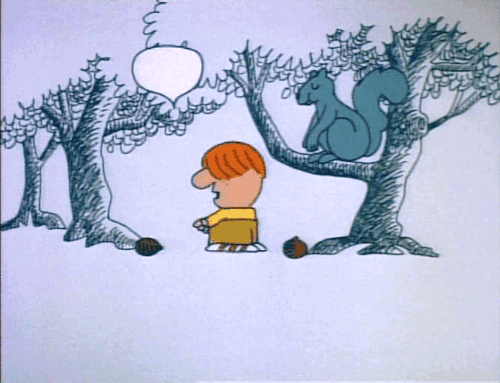#adverb
Text


Schoolhouse Rock (1973), "Lolly, Lolly, Lolly, Get Your Adverbs Here"
#my gif#Schoolhouse Rock#1973#1970s#lolly lolly lolly get your adverbs here#gif#gifs#gifset#animation#cartoons#vintage#television#vintage television#adverb#adverbs
385 notes
·
View notes
Note
Verb
proper noun purposefully uncapitalized
7 notes
·
View notes
Text

4 notes
·
View notes
Text
more in søłsiþe
merö
2 notes
·
View notes
Text
alors
/AhLor/
-> so ; then/in that case
#adverb#langblr#french learning#french#french langblr#french vocab#french language#studyblr#french vocabulary#langblog#french words
18 notes
·
View notes
Text
Studying linguistics is actually so wonderful because when you explain youth slang to older professors, instead of complaining about how "your generation can't speak right/ you're butchering the language" they light up and go “really? That’s so wonderful! What an innovative construction! Isn't language wonderful?"
#linguistics#gen z slang#english#as people in the reblog pointed out!#most gen z slang comes from (or was appropriated from) aave#honestly I was just excited to talk about how people in my field actually get excited about non standard uses of English#instead of ridiculing speakers#and I tagged incorrectly and didn’t point out the very real issues of language and power and appropriation inherent in modern slang#in that much of it was appropriated#and even that which experiences language change in the wider culture still originated in aave#aave is just as linguistically valid as any other English dialect because it is a proper language#and the grammar is incredible!!!#habitual be is fantastic and an excellent example of how a richer case system or a certain case can render an adverb unnecessary#and the phonology is just beautiful#anyway I’m very sorry#I fucked up
21K notes
·
View notes
Text
CẤU TRÚC SO SÁNH HƠN TRONG TIẾNG ANH [PHẦN 1]
So sánh hơn trong tiếng Anh là gì?
So sánh hơn trong tiếng Anh được dùng để so sánh 2 hay nhiều người, sự vật, sự việc ở cùng một khía cạnh. Trong cấu trúc câu so sánh hơn, bạn cần sử dụng tính từ hoặc trạng từ để mô tả rõ nghĩa của câu. Tuy nhiên, bạn nên phân biệt rõ giữa tính từ/ trạng từ ngắn hay tính từ/trạng từ dài để sử dụng đúng cấu trúc câu.

Phân biệt trạng từ và tính từ so sánh
Trong tiếng Anh, tính từ và trạng từ được chia thành 2 loại: tính từ/trạng từ ngắn và tính từ/trạng từ dài.
Tính từ ngắn là những từ chỉ có một âm tiết hoặc hai âm tiết nhưng kết thúc bằng –y, –le, –ow, –er, –et. Bên cạnh đó, tính từ dài là những từ có 3 âm tiết trở lên.
Ví dụ:
Tính từ ngắn: Short, good, bad, hot,…
Tính từ dài: Intelligent, beautiful,…
Trạng từ ngắn là những từ chỉ có một âm tiết. Trong khi đó, trạng từ dài sẽ có hai âm tiết trở lên.
Ví dụ:
Trạng từ ngắn: Hard, right, far,…
Trạng từ dài: Quickly, kindly,…
Đón xem các cấu trúc so sánh hơn và cách dùng cụ thể trong phần tiếp theo.
1 note
·
View note
Text
Word Classes
Word Classes - A brief explanation of the different types of word.
#WritingCommunity #amwriting #writerslife #verbs #nouns #adjectives #words #English #writingtips #writercommunity #language
In language, all words are grouped into different categories or ‘classes’, and they can be confusing, with each class of word serving a specific function.
Here are the main word classes we use in English:
Nouns – a noun is a type of word that is used to identify people, things, ideas, and states. For example:
People – ‘man’, ‘woman’, ‘girl’, ‘boy’
things – ‘toy’, ‘hill’, ‘tree’
Ideas – ‘love’,…

View On WordPress
0 notes
Text
Avoiding common Arabic mistakes: أبدًا and قَطُّ
Native Arabic speakers make certain mistakes in Arabic. The Arabic word for never is often used in the wrong way.
https://arabic-for-nerds.com/grammar/common-mistakes-arabic/?feed_id=5247&utm_source=Tumblr&utm_medium=geralddrissner&utm_campaign=FS%20Poster
#GRAMMAR#TRANSLATION#ADVERB#COMMONMISTAKE#DIFFICULTCONSTRUCTION#PASTTENSE#WEAKLETTER#WIEDERHOLEN#أبدا#سكون#همزة
0 notes
Text
hellauf (adverb); very
hell (adjective); light, bright
auf (adverb); on, to, in, at
0 notes
Text
What's the difference between an adjective and an adverb?
An adjective and an adverb are both parts of speech that serve different grammatical functions in a sentence.
Adjective: An adjective is a word that describes or modifies a noun or pronoun. It provides information about the quality, state, or characteristic of the noun or pronoun it is modifying. Adjectives answer questions like "What kind?" "Which one?" or "How many?"
Examples:
The green grass (describes the quality of the grass)
She bought a new car (describes the state of the car)
We saw five birds (describes the quantity of the birds)
Adverb: An adverb is a word that modifies a verb, adjective, or another adverb. It provides information about the manner, place, time, frequency, degree, or reason of the action or state expressed by the word it is modifying. Adverbs answer questions like "How?" "Where?" "When?" "How often?" "To what extent?" or "Why?"

Examples:
He ran quickly (describes how he ran)
She lives locally (describes where she lives)
They arrived yesterday (describes when they arrived)
She sings beautifully (describes the manner in which she sings)
In summary, the main difference between an adjective and an adverb is that an adjective modifies a noun or pronoun, while an adverb modifies a verb, adjective, or another adverb. Adjectives describe qualities or attributes, whereas adverbs describe actions, states, or other descriptive words.
0 notes
Text

#claw#lazy words#enormous#like#adverb#adverbs#adverb like#adverb: like#adv#adv.#compound word#compound words
0 notes
Text
always in søłsiþe
always: atlib
2 notes
·
View notes
Text
au bout d'un moment
/Oh Boo D'un MohMen/
-> adverbial phrase meaning "at some point/after a while"
literal translation: "at the tip of a moment"
#langblr#french learning#french#french langblr#french vocab#french language#studyblr#french vocabulary#french words#langblog#Adverb#Time
3 notes
·
View notes
Text
I am alive
0 notes